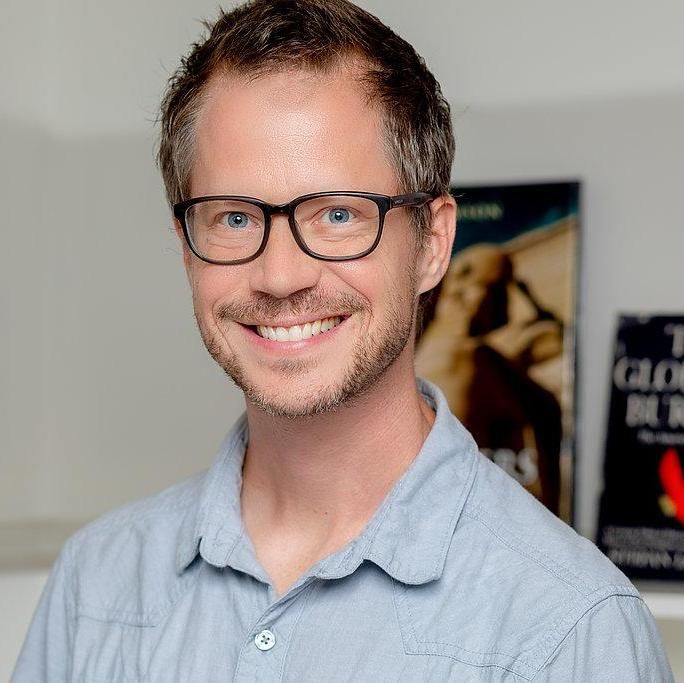
Participation in Gilder Lehrman Teacher Seminar Reinvigorates History in the Classroom
Every year since 2004, the New York-based Gilder Lehrman Institute of American History has named a History Teacher of the Year for each state and territory and the District of Columbia. The 2018 award for D.C. went to William Stevens, who earned his M.A. in American history from The Catholic University of America in 2010 and who teaches at the IDEA Public Charter School in Northeast Washington.
Following his award, in the summer of 2019 Bill participated in the Institute’s Teacher Seminar, a program for K-12 teachers involving presentations by leading professors, visits to historical sites, and work with primary source documents. Looking back from the perspective of this experience, he reflects on how his time in the Department of History has influenced him in the classroom.
He says: “My professors at Catholic University were constantly involved in mastering their content, unbelievably hard working, and striving to be effective communicators. Drs. Leslie Tentler, Timothy Meagher, and Stephen West were constantly evolving in, and developing, their craft, and I, as one of their students, benefited both professionally and personally. I had already been teaching high school history for almost 10 years when I began my M.A. program in 2006. I was enthusiastic and committed, but too dependent on an outdated content understanding and pedagogy that emphasized students as passive learners, not active doers, of history. However, I began to model my pedagogy on my professors: essentially, encouraging, modeling, and trusting my students to become historians. As my professors had done with their students, I began to evolve from a teacher of history to a facilitator of historical analysis. For instance, classroom lessons began to focus less on what a textbook tells us about America and more what the census records tell us about our neighborhood’s history.”
Bill recalls stepping out of Penn Station in Manhattan last July in 112-degree weather, heading for Pace University (and air conditioning) to begin his Gilder Lehrman Teacher Seminar on “Slavery and Abolition.” “I was absolutely floored to see that Dr. Manisha Sinha was offering that seminar. Dr. West had first introduced me to the work of Dr. Sinha, which I had personally used in both my classwork as a graduate student and in my classroom as a teacher. A rhythm of morning lectures by Professor Sinha (and guest lectures by Drs. Ed Baptist and Matthew Karp) and afternoon site visits and pedagogy sessions by Gilder Lehrman Master Teacher Georgette Hackman structured the week. It more than satisfied my expectations, as it was in miniature what had been so rewarding about my time at Catholic University.”
Stephen West, Associate Professor in the Department of History and one of Bill’s graduate mentors, particularly remembers Bill’s interest in Washington history, which resulted in research projects about the Barry Farm neighborhood and about changing patterns of residential demography in the Shaw area of the city. Professor West comments: “We’re extremely proud of Bill. He’s an excellent historian and a wonderful teacher. We’re delighted that he’s inspiring in his students the same passion for research – for doing history, as he puts it – that he showed in his graduate studies here in the Department.”
For Bill, the most significant immediate influence of the Teacher Seminar has been his decision to incorporate National History Day (NHD) – an annual project-based contest for students in grades 6-12, now involving more than half a million students nationwide every year – in his American History course. “This year, I plan to teach an entire unit on the abolition movement, not just a lesson in a larger Civil War unit. For their NHD project, students will be able to choose a topic from within this abolition unit. They will then become the resident experts on this topic and spend the year developing their project, using sound historical research methods.”
As Bill read his students’ NHD project proposals last week, he was excited to see the diverse list of individual abolitionists like William Lloyd Garrison, Mary Ann Cary Shadd, Anthony Bowen, and Sarah Parker Remond incorporated. “I’m also hopeful that events like Nat Turner’s rebellion, ‘The Pearl’ affair, and the Christiana Uprising will allow my students to confront the myth found in textbooks, that events that challenged slavery generally came in the form of compromises or speeches that took place in the halls and houses of Congress. Tykirah, a student in my 3rd Period, captured this engagement and hope in her National History Day proposal: ‘During those times in history when racism seemed to be overwhelming, he [William Lloyd Garrison], as a white man, chose to help those different than himself… It is more than I would expect, and I can’t wait to tell this story.’
“I agree with Tykirah. Building on the examples provided to me by my professors at Catholic University, the Gilder Lehrman Teacher Seminar better prepared me to communicate this important content and, like Tykirah, I can’t wait to tell this story!”
